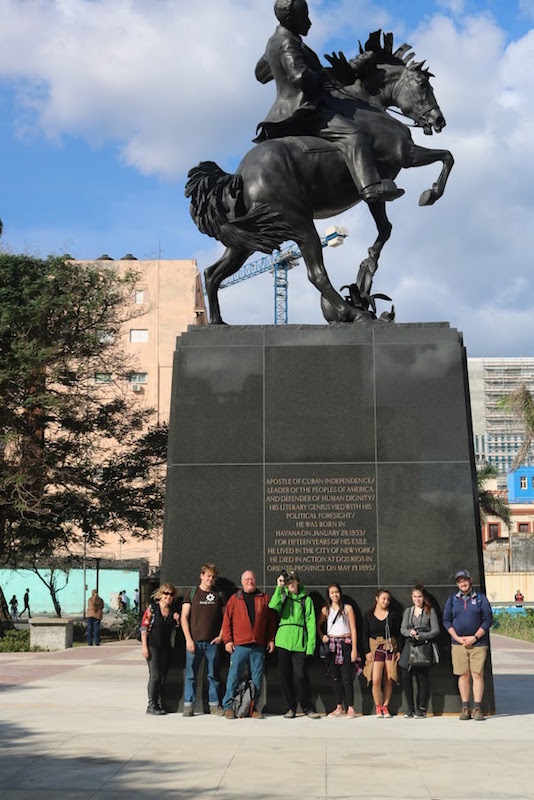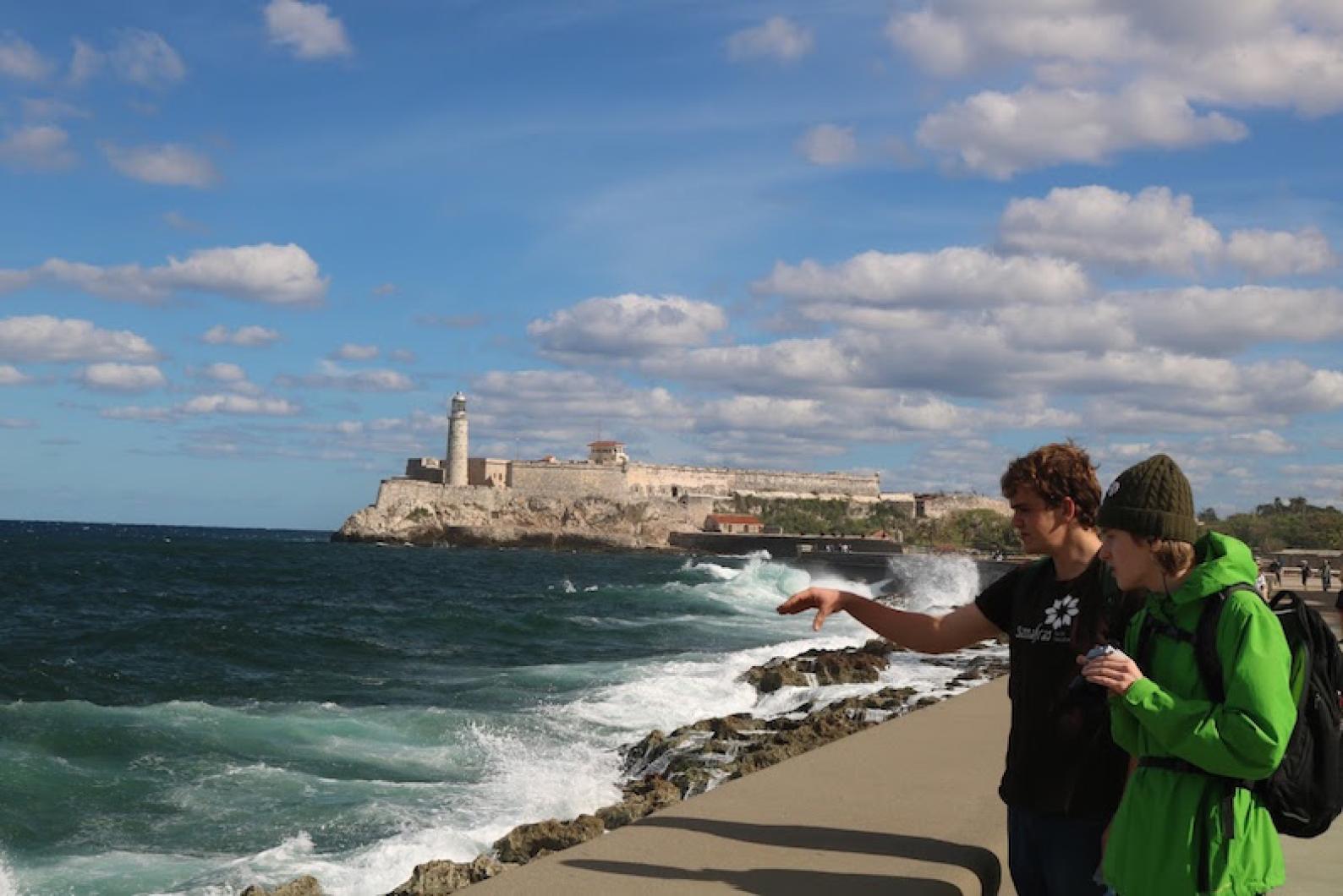On Dec. 8, 2017, I was fortunate enough to be asked to join a collective of Martha’s Vineyard Public Charter School students and community members to spend 12 days exploring Cuba, studying sustainability, self-sufficiency and economics, and learning about the country’s rich history.
Our time in Cuba was made possible through a Martha’s Vineyard Vision Fellowship grant and the efforts of Charter School social studies teacher Jonah Maidoff, along with a supportive faculty and the Island community.
On Thursday, May 10, students will give a presentation at 5:30 p.m. at the Charter School about the trip to help raise money for Cuban NGO’s. There will be discussions on the impacts of the embargo, Cuban agriculture, the growing tourist industry, as well as pictures from the excursion.

With the start of the 2017-18 school year Jonah introduced a new element into the curriculum, an immersive study of Cuban history and the current state of the country. Five students would ultimately be selected to participate and visit the country to expand on the research projects they had designed for Jonah’s class and bring back information to their classmates and the community. These students were Keith Chatinover, Claudia Motta, Marshall Davidson, Ruby Jephcote and Tatiana Major. The group was also joined by Sherilyn Geistfeld, an expert on Latin American and specifically Cuban history, and Mary Sage Napolitan from the Island Grown Initiative. I graduated a year earlier but was also invited to join the trip, having traveled with Jonah and our class to Alaska the prior year.
We arrived in Havana on Dec. 9 and over the course of 12 days traveled to Vinales, Cienfuegos and Trinidad with a number of stops along the way. We spoke mostly in Spanish, with the help of our tour guide Orletiz, to local farmers, business owners and professors. People on the street greeted everyone politely, and the pace didn’t feel as rushed as cities like New York or Boston. Even the street vendors seemed far less aggressive.
Visiting the slums of Casa Blanca, within the city of Havana, we received similar courtesies from everyone we encountered. With the nuns and local children as our guides we were able to explore the community in a way that might not have been available to most tourists.
As we weaved down the narrow, muddy roads I wondered how I would fare walking through there on my own, even though everywhere we went people said that Cuba is an incredibly safe place. We came up with a number of theories as to why this might be so, but I think the most accurate explanation for the safety and friendliness of the locals comes from a combination of social programs, patriotism and harsh punishment for even minor offences. With most basic needs provided by the government, there seemed to be far less desperate individuals.

Our visit to Vinales still stands out in my mind. Located on the northwestern side of the island, Vinales is one of the country’s major agricultural centers. Within the valley at the edge of one of the country’s largest national parks, the locals grow a variety of crops, particularly tobacco. We were able to witness the extent of Cuba’s self sufficiency and stewardship there. The farms were small, well maintained, and were worked without the use of fossil fuels.
When talking with the farmers, it was evident that they understood the importance of minimizing their impact in order to maintain a healthy environment and agricultural system. While many of Cuba’s agricultural practices developed due to a lack of resources during the embargo, over time the practices have been applied with an increasing emphasis on sustainability. Multiple farmers were happy to explain how they use the tobacco stems to ward off insects. Another way around insecticides was presented as the “sacrifice plant” where a farmer will place something such as a sweet corn at either end of the plant bed for the insects to feast on. Others described methods more commonly used, such as surrounding the crops with marigolds.
Looking at the Cuban countryside it would seem that these efforts to maintain the island’s natural habitats have been successful. Exploring the countryside I saw what seemed to be an incredible degree of biodiversity compared to what I see wandering New England.
What I found equally amazing during the trip was the fresh perspective on Cuban history I gained, along with the history of the Americas. Our visit to Trinidad provided a greatly expanded view of slavery in the colonial Americas, and the brutality of colonial sugar plantations.
Most interesting of all was learning about Cuba since the revolution.
Looking upon Cuban war monuments, you get a very different perspective of Castro’s revolution, the Bay of Pigs, and the Cuban Missile Crisis. Overall, the group’s exploration would offer a much broader understanding of history.
During our travels I was frequently reminded of the book Ecotopia written by Ernest Callenbach. The story takes place in a future where the majority of the American West Coast has seceded. The newly formed nation becomes a model of sustainability and environmentalism. The story is written from the perspective of an American journalist who is among the first to visit the country since its formation. He arrives with all kinds of pre-conceived ideas about how horrible life is for the people of Ecotopia, and while he finds some truth to these rumors most of them are quickly proven to be wrong.
Our time in Cuba seemed comparable to the journalist’s exploration of Ecotopia because everyday there was something new that we saw or heard that I felt was truly amazing, and often unique to Cuba, and changed my ideas about the country.
I look forward to sharing more insights, along with the rest of the group, on May 10.




Comments (18)
Comments
Comment policy »